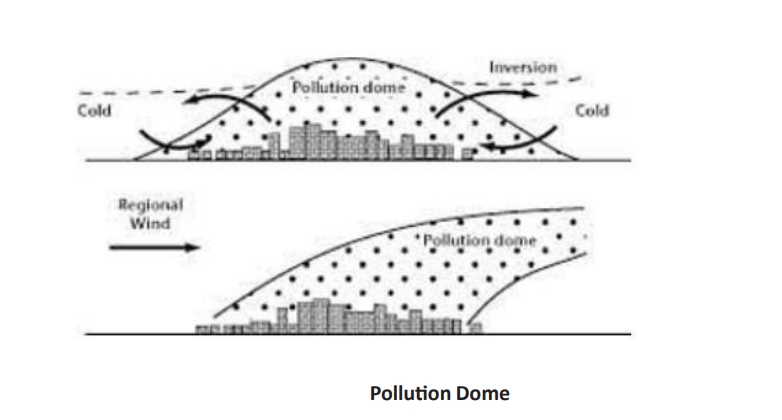
The term “pollution dome” refers to a concentrated and often dome-shaped accumulation of pollutants in the atmosphere, posing a significant threat to environmental and human health. This phenomenon typically occurs in urban areas with high levels of industrial activities, vehicular emissions, and other sources of pollution. The formation of a pollution dome is a result of the stagnation of air masses, often exacerbated by geographical and meteorological factors, trapping pollutants within a confined space. As these pollutants accumulate, they create a visible dome-like layer that hovers over the affected region. The impacts of pollution domes are manifold, ranging from deteriorating air quality and respiratory issues to adverse effects on ecosystems and climate. Understanding the formation and consequences of pollution domes is crucial for developing effective strategies to mitigate their harmful effects and safeguard the well-being of both the environment and human populations.
Contents
Answer
Urban areas are characterized by environmental modifications like increased concretization and unsustainable growth of urban areas, an important manifestation of these modifications is a specific type of air pollution event, pollution dome, localized and often dome-shaped accumulation of air pollutants, typically associated with urban areas or industrial zones.
- Formation of a Pollution Dome
- This phenomenon occurs due to the unique meteorological and geographical conditions that trap pollutants near the Earth’s surface, creating a dome-like structure of concentrated pollution.
- Stable Weather Conditions
- Often formed when there are stable atmospheric conditions, such as temperature inversions, prevent vertical mixing of the atmosphere, trapping pollutants close to the ground.
- Local Sources
- Nearby pollution sources, such as vehicular emissions, industrial facilities, and heating systems, continuously release pollutants into the air.
- Geographical Features
- like valleys or mountains can contribute to the trapping of pollutants. These features limit the dispersion of pollutants, enhancing the formation of a dome. Impacts of Pollution Domes
- Health Effects
- Pollution domes can result in elevated concentrations of harmful air pollutants, including particulate matter (PM), ground-level ozone (smog), nitrogen dioxide (NO2), and volatile organic compounds (VOCs).
- Prolonged exposure to these pollutants can lead to respiratory problems, cardiovascular diseases, and other health issues in local populations.
- Visibility Reduction
- The accumulation of pollutants can reduce visibility, creating smog or haze,affect the aesthetic quality of the environment,and pose safety risks for transportation.
- Environmental Damage
- Acid rain can result from elevated levels of sulfur dioxide (SO2) and nitrogen oxides (NOx) released within pollution domes.
- Economic Impact
- Poor air quality can lead to increased healthcare costs and decreased worker productivity,and may deter tourists and businesses from the affected area.

Mitigating pollution domes often involves reducing emissions from local sources through regulations and technological improvements. Additionally, monitoring and forecasting air quality, as well as issuing advisories and alerts, can help protect public health during pollution dome events.

In case you still have your doubts, contact us on 9811333901.
For UPSC Prelims Resources, Click here
For Daily Updates and Study Material:
Join our Telegram Channel – Edukemy for IAS
- 1. Learn through Videos – here
- 2. Be Exam Ready by Practicing Daily MCQs – here
- 3. Daily Newsletter – Get all your Current Affairs Covered – here
- 4. Mains Answer Writing Practice – here

